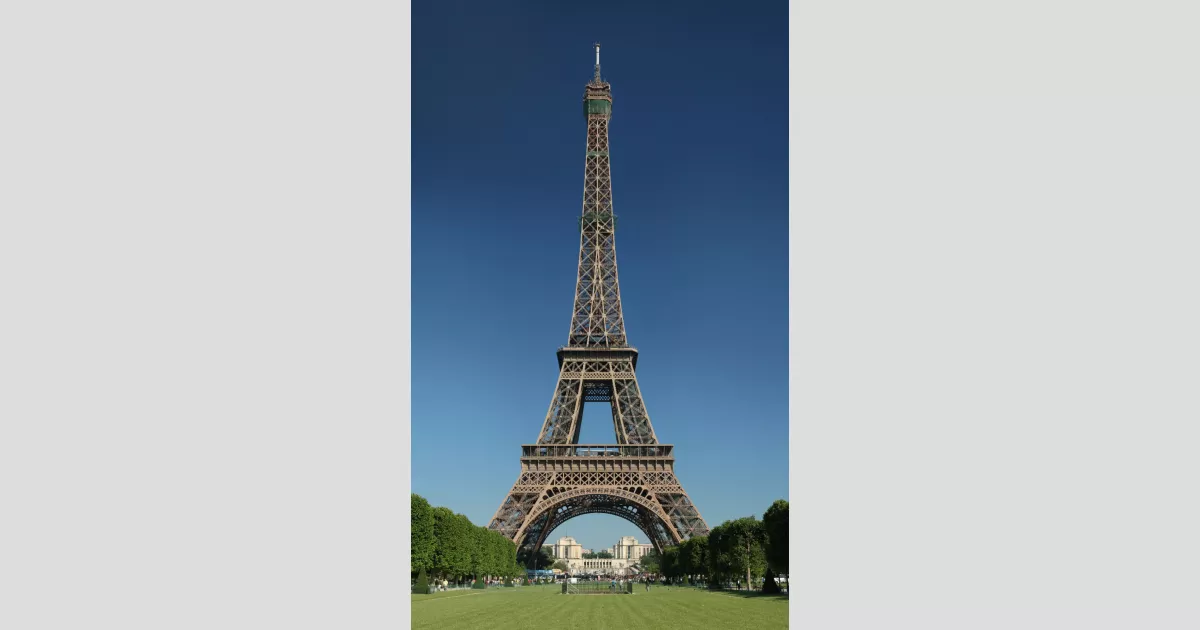1900: Lift Replacements and Modifications
For the 1900 Exposition Universelle, the Eiffel Tower underwent significant modifications, including replacing lifts in the east and west legs and modifying the first and second levels to accommodate more visitors.
October 1901: Alberto Santos-Dumont's Flight
In October 1901, aviation pioneer Alberto Santos-Dumont achieved a remarkable feat by flying his No. 6 airship from St. Cloud to the Eiffel Tower and back in under half an hour, winning a 100,000-franc prize.
1909: Construction of Permanent Underground Radio Centre
In 1909, a permanent underground radio center was constructed near the south pillar of the Eiffel Tower, marking a significant step in the tower's transformation into a telecommunications hub. This development paved the way for the tower's enduring role in broadcasting and communication.
1909: Expiry of the Permit
The Eiffel Tower was initially granted a permit to stand for 20 years, set to expire in 1909, after which the City of Paris planned to dismantle it.
1910: Saved from Demolition
Due to its value for innovations in radio telegraphy, the Eiffel Tower was saved from demolition and became part of the International Time Service in 1910.
1910: Discovery of Cosmic Rays
While measuring radiant energy at the Eiffel Tower, Father Theodor Wulf made an unexpected discovery in 1910 – he found higher levels of radiation at the top, inadvertently uncovering what we now know as cosmic rays.
February 1912: Tragic Parachute Jump
In a tragic incident in February 1912, Austrian tailor Franz Reichelt lost his life attempting to demonstrate his parachute design by jumping from the first level of the Eiffel Tower.
November 1913: Eiffel Tower Used for Transatlantic Wireless Signals
In a groundbreaking moment for international communication, on November 20, 1913, the Eiffel Tower played a pivotal role in exchanging wireless signals between the Paris Observatory and the United States Naval Observatory in Arlington, Virginia. Utilizing the tower as an antenna, this historic transmission aimed to accurately measure the difference in longitude between Paris and Washington, D.C., highlighting the tower's growing importance in scientific exploration.
1914: Role in World War I
During World War I, a radio transmitter installed on the Eiffel Tower played a crucial role in jamming German radio communications, disrupting their advance on Paris and contributing to the Allied victory at the First Battle of the Marne.
1925: Illuminated Advertising for Citroën
From 1925 to 1934, the Eiffel Tower became the world's tallest advertising space, featuring illuminated signs for Citroën, a testament to its iconic status and visibility.
1925: The Eiffel Tower "Sold" for Scrap
In a brazen act of deception, con artist Victor Lustig managed to "sell" the Eiffel Tower for scrap metal not once but twice in 1925, highlighting the audacity of his scheme.
February 1926: Fatal Plane Crash
Tragedy struck in February 1926 when pilot Leon Collet attempted to fly under the Eiffel Tower, resulting in a fatal crash as his aircraft collided with an aerial belonging to a wireless station.
May 1929: Bust of Gustave Eiffel Unveiled
On May 2, 1929, a bust of Gustave Eiffel, created by Antoine Bourdelle, was unveiled at the base of the north leg of the tower, honoring the visionary engineer behind the iconic structure.
1929: Chrysler Building Surpasses Eiffel Tower in Height
After holding the title of the world's tallest structure for forty years, the Eiffel Tower was surpassed by the Chrysler Building in New York City in 1929. The Chrysler Building's completion marked a turning point in architectural achievement, as skyscrapers began to dominate city skylines.
1930: Surpassed in Height
After holding the title of the tallest human-made structure for 41 years, the Eiffel Tower was surpassed by the Chrysler Building in New York City in 1930.
1930: Chrysler Building Claims Tallest Title
In 1930, the Eiffel Tower lost its title as the world's tallest structure to the newly completed Chrysler Building in New York City, marking a shift in architectural achievements.
1934: End of Citroën Advertising
In 1934, the illuminated advertising for Citroën, which had adorned the Eiffel Tower for nearly a decade, was removed.
April 1935: Experimental Television Transmissions
In April 1935, the Eiffel Tower was at the forefront of technological innovation, being used to conduct experimental low-resolution television transmissions.
1937: Opening of Restaurant Near the Top of the Eiffel Tower
Adding a touch of culinary delight to the Parisian skyline, a restaurant opened near the top of the Eiffel Tower in 1937. Perched high above the city, the restaurant offered breathtaking views and a unique dining experience.
1938: Removal of Decorative Arcade
As part of ongoing modifications, the decorative arcade surrounding the first level of the Eiffel Tower was removed in 1938, altering its appearance.
June 1940: German Occupation of Paris
In June 1940, Paris fell under German occupation, a dark period during which the Eiffel Tower's lift cables were cut, and access was restricted to German visitors.
August 1944: Liberation of Paris
As the Allies approached Paris in August 1944, German forces were driven out, and the Eiffel Tower, a symbol of the city, was liberated.
1946: Lifts Repaired After Occupation
After the liberation of Paris in 1946, repairs were undertaken to restore the Eiffel Tower's lifts, which had been damaged during the German occupation.
January 1956: Fire Damages Television Transmitter
Disaster struck in January 1956 when a fire broke out in the television transmitter atop the Eiffel Tower, causing significant damage to the structure's top.
1957: Radio Aerial Added
Following the fire in 1956, the Eiffel Tower underwent repairs, and a new radio aerial was added to its top in 1957, enhancing its communication capabilities.
1957: First Television Antenna Installed on Eiffel Tower
In 1957, the Eiffel Tower entered the television age with the installation of its first television antenna, increasing its height by 18.7 meters. This addition marked the beginning of the tower's significant role in broadcasting, extending its reach into the homes of millions.
1957: Addition of Broadcasting Aerial
With the addition of a broadcasting aerial in 1957, the Eiffel Tower surpassed the Chrysler Building in height once again, becoming taller by 5.2 meters.
1958: Tokyo Tower Inspired by Eiffel's Legacy
Completed in 1958, Tokyo Tower stands as a testament to the Eiffel Tower's global influence, showcasing its enduring legacy in inspiring architectural marvels worldwide.
1958: Tokyo Tower Becomes World's Tallest Tower
In 1958, the Eiffel Tower was once again surpassed in height, this time by the Tokyo Tower, a testament to the continuous advancements in engineering and architectural ambition. Though no longer the world's tallest, the Eiffel Tower maintained its prominence as a symbol of France and a testament to human ingenuity.
1964: Declared a Historical Monument
In recognition of its enduring cultural and historical significance, the Eiffel Tower was officially declared a historical monument in 1964.
1967: Montreal Relocation Plan
In 1967, a secret agreement was allegedly reached between Montreal Mayor Jean Drapeau and Charles de Gaulle to dismantle and temporarily relocate the Eiffel Tower to Montreal for Expo 67, though the plan was ultimately vetoed, preventing the iconic structure's relocation.
1968: Eiffel Tower Gets a New Color
In 1968, the Eiffel Tower underwent a color transformation, shedding its original reddish-brown hue for a bronze tone known as "Eiffel Tower Brown." This new color scheme aimed to better complement the Parisian sky, enhancing its visual harmony with the surrounding environment.
1972: Eiffel Tower Replicas at Amusement Parks
Demonstrating the tower's global appeal, 1:3 scale models were erected at Kings Island amusement park in Mason, Ohio, in 1972.
1975: Expansion of Eiffel Tower Replicas
Adding to the growing number of replicas, another 1:3 scale model of the Eiffel Tower was unveiled at Kings Dominion amusement park in Virginia in 1975.
1981: Removal of Restaurant Due to Structural Concerns
In 1981, structural concerns led to the removal of the restaurant near the top of the Eiffel Tower. Engineers deemed the restaurant too heavy, causing the tower to sag, prompting its disassembly and relocation. The restaurant found a new home in the United States, where it was rebuilt and enjoyed a second life.
1982: Eiffel Tower Lift Replacement
In 1982, the Eiffel Tower underwent significant renovations with the replacement of the original lifts between the second and third levels after 97 years. The old lifts were prone to freezing during the winter months, requiring closure. The new, more efficient lifts operate in pairs, counterbalancing each other for a faster journey time. Additionally, two new emergency staircases were installed to replace the original spiral staircases.
1983: Installation of Otis Lift
In 1983, the south pillar of the Eiffel Tower was equipped with an electrically driven Otis lift to provide dedicated access to the Jules Verne restaurant, enhancing accessibility and convenience for diners.
March 1984: Robert Moriarty Flies Under Eiffel Tower
In a daring feat in March 1984, pilot Robert Moriarty flew a Beechcraft Bonanza under the Eiffel Tower, showcasing a remarkable display of aviation skill and audacity.
1986: Restoration of Names on Eiffel Tower
In a tribute to the scientific minds behind its construction, the names of 72 French scientists, engineers, and mathematicians, originally engraved on the Eiffel Tower by Gustave Eiffel himself, were restored in 1986–87. Painted over at the beginning of the 20th century, the engravings were meticulously revived by the Société Nouvelle d'exploitation de la Tour Eiffel, the company entrusted with the tower's operation, reaffirming the intricate link between art, science, and engineering embodied in this iconic structure.
1986: Refurbishment of Fives-Lille Lifts
The year 1986 saw a major refurbishment of the Eiffel Tower's Fives-Lille lifts in the east and west legs, originally installed in 1899. The renovations included replacing the cars and implementing a computer system for complete automation. The lift's power source transitioned from a water hydraulic system to a new electric-driven, oil-filled hydraulic system, with the original system retained for counterbalancing.
1987: A. J. Hackett's First Bungee Jump from Eiffel Tower
In 1987, the Eiffel Tower became the stage for one of A. J. Hackett's pioneering bungee jumps. Using a special cord he had helped design, Hackett leaped from the top of the tower, only to be apprehended by authorities upon landing. This event marked the beginning of the tower's association with extreme sports and daring feats.
1989: Eiffel Tower Centennial Celebration
The Eiffel Tower celebrated its 100th anniversary in 1989 with a special lighting display, which later became the subject of a copyright controversy.
June 1990: Copyright Claim on Eiffel Tower Illumination
A French court ruled in June 1990 that a special lighting display on the Eiffel Tower in 1989 for its 100th anniversary was protected by copyright.
October 1991: Thierry Devaux's Acrobatic Bungee Jumps
On a day in October 1991, Thierry Devaux, accompanied by mountain guide Hervé Calvayrac, captivated onlookers with a series of acrobatic bungee jumps from the Eiffel Tower's second floor. Utilizing an electric winch to ascend between jumps, Devaux gracefully performed six jumps before being stopped by firefighters, creating a memorable spectacle against the backdrop of the Champ de Mars.
1991: UNESCO World Heritage Site
In 1991, the Eiffel Tower, as part of "Paris, Banks of the Seine," was inscribed as a UNESCO World Heritage Site, further cementing its global importance.
March 1992: Copyright Ruling Upheld
The French Court of Cassation upheld the March 1992 ruling that the Eiffel Tower's illumination is a separate work of art protected by copyright.
1993: Replica in Paris, Texas
A replica of the Eiffel Tower was erected in Paris, Texas, in 1993, further illustrating its international recognition and influence.
1993: Eiffel Tower Enters Public Domain
Seventy years after Gustave Eiffel's death, the Eiffel Tower and its image entered the public domain in 1993. However, the illumination of the tower remained protected under copyright.
December 1999: Eiffel Tower's "Countdown to the Year 2000" Celebration
To celebrate the arrival of the new millennium on December 31, 1999, the Eiffel Tower was transformed into a dazzling spectacle of light and sound. Flashing lights, powerful searchlights, and a grand fireworks display marked the transition to the year 2000. The dazzling display began at the tower's base and ascended to its peak, illuminating the Parisian sky in an unforgettable celebration.
December 2000: Eiffel Tower Illuminates in Blue for the New Millennium
On December 31, 2000, the Eiffel Tower marked the dawn of the new millennium with a vibrant display of blue lights, bathing the Parisian skyline in a cool, ethereal glow.
2000: Eiffel Tower Antenna Height Increased
In 2000, the Eiffel Tower underwent further modifications to accommodate evolving technology with an extension of its antenna, adding an additional 5.3 meters to its height and bringing it to its current stature of 324 meters. This adjustment solidified the tower's capacity to broadcast across the Paris skyline.
2000: Eiffel Tower as a Beacon of the New Millennium
With the turn of the millennium in 2000, the Eiffel Tower was further enhanced with the addition of searchlights at its summit, solidifying its status as a beacon in the Parisian night sky. Furthermore, 20,000 flashing bulbs were installed, creating a captivating sparkly effect that illuminated the tower for five minutes every hour. This dazzling display was intended as a temporary feature to mark the new millennium and remained active for eighteen months.
July 2001: End of the Millennium Light Show
After captivating spectators for 18 months, the Eiffel Tower's sparkling light display, launched to commemorate the new millennium, concluded in July 2001. The lights, a symbol of hope and a nod to the future, temporarily dimmed, leaving a lasting impression on those who witnessed their brilliance.
2001: End of Lead Paint Use on Eiffel Tower
In 2001, a pivotal decision was made to cease the use of lead paint on the Eiffel Tower due to growing environmental concerns. This marked a significant step towards eco-conscious maintenance practices for the iconic structure, prioritizing the well-being of both the environment and public health.
November 2002: Eiffel Tower Welcomes 200 Millionth Visitor
In a testament to its enduring global appeal, the Eiffel Tower welcomed its 200 millionth visitor on November 28, 2002. This significant milestone solidified its position as one of the world's most visited landmarks.
2002: Eiffel Tower Copyright Revenue
The SNTE generated over €1 million in copyright fees from the Eiffel Tower's illumination in 2002.
June 2003: Return of the Sparkling Lights
Much to the delight of locals and tourists alike, the Eiffel Tower's enchanting sparkly lights were reactivated on June 21, 2003, after a two-year hiatus. This time, the display came with the promise of a decade-long run, allowing a new generation to witness the tower's magical illumination.
2003: Eiffel Tower Achieves Peak Visitor Capacity
By 2003, the Eiffel Tower had reached its peak visitor capacity, accommodating approximately seven million visitors annually. This remarkable feat underscored its enduring popularity as a global destination, attracting travelers from all corners of the world.
2004: Eiffel Tower Debuts Seasonal Ice Rink
Enhancing its winter allure, the Eiffel Tower introduced a seasonal ice rink on its first level in 2004. This new attraction offered visitors a unique and enchanting experience, transforming the iconic landmark into a winter wonderland.
2004: Unveiling the Eiffel Tower's Design Secrets
In 2004, the translation of letters sent by Gustave Eiffel to the French Society of Civil Engineers in 1885 shed new light on the tower's ingenious design. The letters revealed that Eiffel had prioritized graphical methods and empirical data, particularly regarding wind resistance, over rigid mathematical formulas. This approach, emphasizing an exponential shape and robust over-engineering, contributed to the tower's enduring strength and stability, cementing Eiffel's legacy as a visionary engineer.
2005: Justification for Copyright Claim
Stéphane Dieu, Director of Documentation for the Société Nouvelle d'exploitation de la Tour Eiffel (SNTE), stated in 2005 that the copyright on the Eiffel Tower's illumination was a way to control commercial use of its image.
2007: Alain Ducasse Takes Helm at Le Jules Verne
In 2007, the culinary world took note as multi-Michelin-starred chef Alain Ducasse assumed leadership of Le Jules Verne, the prestigious restaurant located on the second floor of the Eiffel Tower. Ducasse's arrival elevated the restaurant's reputation, attracting discerning diners seeking a unique and unforgettable dining experience.
2010: Most Recent Repainting of the Eiffel Tower
In 2010, the Eiffel Tower underwent its most recent complete repainting, a meticulous process that requires approximately 60 tons of paint to protect the structure from rust and corrosion. This ongoing maintenance ensures that the tower retains its structural integrity and iconic appearance for generations to come.
March 2011: End of Analogue Television Transmissions from Eiffel Tower
As technology advanced, the Eiffel Tower's role in broadcasting evolved. On March 8, 2011, the tower ceased transmitting analogue television signals, marking the end of an era. This transition reflected the global shift towards digital television, and the tower adapted to these changing technological landscapes.
2011: Hypothetical Cost of Replicating the Eiffel Tower
The National Geographic Channel's show "Pricing the Priceless" estimated in 2011 that building a full-scale replica of the Eiffel Tower would cost around US$480 million, significantly more than the original's cost.
2014: Unchallenged Copyright and Potential Implications
An article in the Art Law Journal in 2014 highlighted that the Eiffel Tower's copyright claim had yet to be tested in court. It pointed out the potential implications for commercial use of images and the vast number of photographs shared online.
2014: Installation of Glass Floor on First Level
In a bid to enhance the visitor experience, a glass floor was installed on the first level of the Eiffel Tower during a 2014 refurbishment. This transparent marvel provided breathtaking views of the ground below, adding a thrilling new dimension to the tower's allure.
2015: Record Visitor Numbers
In 2015, the Eiffel Tower saw 6.91 million visitors, solidifying its status as one of the world's most popular tourist destinations.
2015: Most Visited Paid Monument
In 2015, the Eiffel Tower solidified its status as the most visited monument with an entrance fee globally, attracting an impressive 6.91 million people.
2017: Alain Ducasse's Tenure at Le Jules Verne Ends
After a successful decade-long tenure, Alain Ducasse's time at the helm of Le Jules Verne concluded in 2017, marking the end of an era for the restaurant. Ducasse's innovative cuisine and commitment to excellence left a lasting impact on the restaurant's legacy.
2018: Original Cost of the Eiffel Tower in Today's Currency
In 2018, it was estimated that the original cost of building the Eiffel Tower in 1890, approximately 8 million Francs, would equate to about US$40 million today.
May 2019: Frédéric Anton Becomes Chef at Le Jules Verne
In May 2019, Le Jules Verne welcomed renowned three-star chef Frédéric Anton as its new culinary maestro. Anton, known for his refined cuisine and innovative techniques, ushered in a new chapter for the restaurant, continuing its tradition of culinary excellence.
2022: Record Number of Visitors
In 2022, the Eiffel Tower received a staggering 5,889,000 visitors, highlighting its enduring popularity as a global tourist destination.
2024: Eiffel Tower Dons Gold for 2024 Olympics
In anticipation of the 2024 Summer Olympics hosted in Paris, the Eiffel Tower was painted gold, a striking departure from its traditional bronze. This temporary yet symbolic makeover aimed to celebrate the spirit of the Games and cast the iconic landmark in a radiant, celebratory light.
Mentioned in this timeline
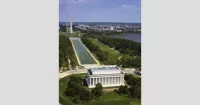
Washington D C is the capital city and federal district...
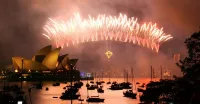
Fireworks are pyrotechnic devices primarily utilized for entertainment and aesthetic...
Virginia officially the Commonwealth of Virginia is a state located...
France officially the French Republic is primarily located in Western...
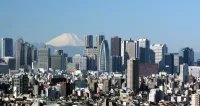
Tokyo officially Tokyo Metropolis is the capital and most populous...
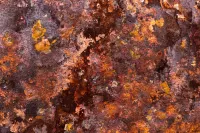
Rust is a reddish-brown iron oxide formed by the reaction...
Trending
Jaylen Warren is a professional American football running back currently playing for the Pittsburgh Steelers in the NFL He had...

7 months ago Michelle Obama Reveals Barack's Joke After Her Mother's Death and Pope's Viewing Habits.
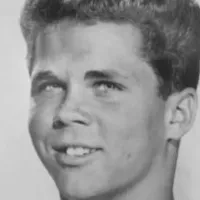
Tony Dow was a renowned American actor producer director and sculptor best known for his role as Wally Cleaver in...
2 months ago IREN Stock Surges on AI Cloud Deals and Bitcoin Mining Integration.
10 days ago Lawsuit Filed Over KISD Stabbing; Killeen Principal Resigns From Ira Cross
7 months ago Josh Bell's Big Night: Solo Homer and Multi-Hit Game ignite Hopes
Popular

Candace Owens is an American conservative political commentator and author...

Ilhan Omar is an American politician currently serving as the...

XXXTentacion born Jahseh Dwayne Ricardo Onfroy was a controversial yet...

Oprah Winfrey an American talk show host television producer actress...
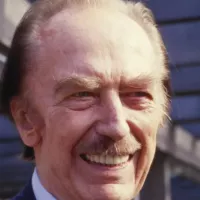
Frederick Christ Trump Sr - was an American real estate...

Tom Cotton is an American politician and Army veteran currently...
